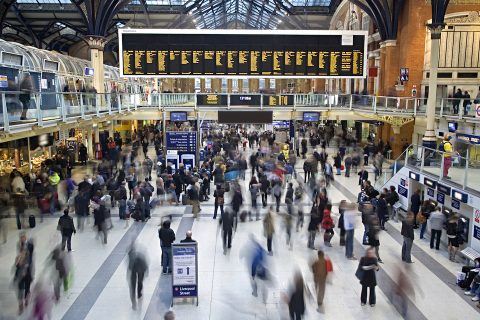InnoTrans24: voestalpine launches zentrak Object Controller Point

As InnoTrans ’24 gets underway in Berlin, railway tech giant voestalpine is launching its latest product, the zentrak Object Controller Point. Sitting down with RailTech ahead of the conference, managing director of the company’s signalling division, Holger Pütz, takes us through the ground-breaking trackside control system, explaining how exactly the new product will drastically cut maintenance checks.
Could you describe voestalpine Railway System’s new zentrak Object Controller Point and what exactly it does?
The voestalpine Railway System’s zentrak Object Controller Point is the interface between latest digital standards such as EULYNX as well as legacy interlockings and the turnout with three functional levels: control, inspect, maintain. It is to be seen as one part of a broader system. With vital and non-vital monitoring of turnout and track systems and the voestalpine Railway Systems domain know-how, regular maintenance and inspection is a thing of the past. At InnoTrans we will be showing the new zentrak Object Controller Point connected to the ECOSTAR 5.0 intelligent point machine with vital and non-vital monitoring. zentrak Infrastructure Monitoring as part of the Software Platform displays the condition of the assets.
What makes the device so competitive amid the many advances currently taking place in the industry?
First of all, we are seeing a big trend in having more trains running on the same tracks. It won’t be possible to build new tracks everywhere and there will be a lot of density issues. Essentially, there is less and less time for maintenance. Our vision is “no people on tracks” and “maximum traffic on track”. Combining the capabilities of the zentrak Object Controller Point with our intelligent point machines as a system, we are reducing maintenance and inspection needs by extending maintenance and inspection cycles. This is maximising traffic on track. At the same time, the customer also gets predictive and prescriptive maintenance and inspection information in the zentrak software. That means sudden failures of the turnout system can be avoided.
What sort of total life cycle costs can we expect from the zentrak? And how about the reliability of the device?
Well, if you consider that today common turnout systems have to be maintained and inspected at an average rate of four times per year, the potential to increase track availability is very high. Latest security standards were taken into account during the development phase with crypto on board meeting EULYNX Baseline 4.3 standards.

Could you tell us a little bit about the advancements in the algorithms? How does it compare with your competitors?
I think the biggest difference is that in voestalpine Railway Systems we have a very broad domain know-how covering different areas of turnout and track systems, including switch machines, locking devices, SIL4 Signaling devices such as the UNIAC2 axle counting system and so on and so forth. We know how they work, we know how they behave, and we know how to maintain them. We also know failure modes of these systems. The understanding how those products and systems behave on the track has been considered in developing new algorithms. Information derived from these algorithms is considered in the integrated safety case analysis so we are making sure that the vital data we are generating is used as a foundation to demonstrate that inspection and maintenance cycles can be stretched.
Are there any other technological advancements specific to the zentrak Object Controller Point?
Sure. We should mention that with integrating cryptography on board there is no need for external crypto boxes. On the other hand, it is also possible to interface to legacy interlocking systems for digitalisation of wayside equipment and preparation for migration to digital interlocking systems.
Great! So let’s talk about your company’s role in the rapid digitalisation of the rail industry. Has it been difficult keeping up with all the changes?
Digitalisation as such is one of the key drivers for railways. Monitoring of the turnout systems that we’re supplying is of course a big factor. We move to rolling out turnouts as intelligent turnouts, with intelligent point machines, so it’s really all digitalised.
Your products give huge potential in terms of collecting data. How can increased data sharing help streamline rail and what are some of the challenges?
EULYNX as the standard protocol for digital interlockings is a driver in this direction. Under EULYNX all the monitoring data is gathered in a server system that is part of the standard. So first of all, there is one standard for data. It’s all in one place. And from there on, access can be and should be given to various companies offering algorithm services to get the best information out of the data available. To date, railway infrastructure networks, for safety reasons, are always closed networks. Data ownership is always a question but I’m certain that digital interlockings and the EULYNX standard will open up this situation.
Sure. So finally, it’s InnoTrans ’24 this week. What kind of innovations and products will you be looking out for?
I think it’s always a really good chance to see the general offerings. Fully automated trains, for example, are coming. The systems to enable that will be on display and I think this is a really big step forward in getting more trains on the tracks.
Read more:





